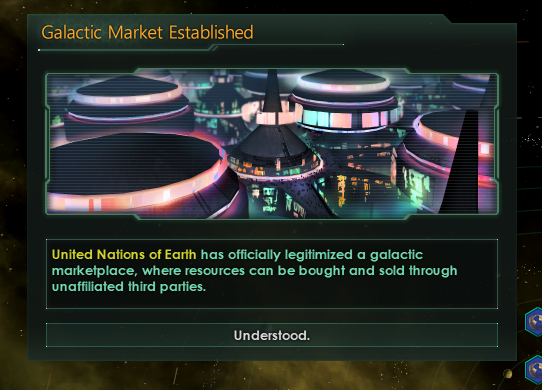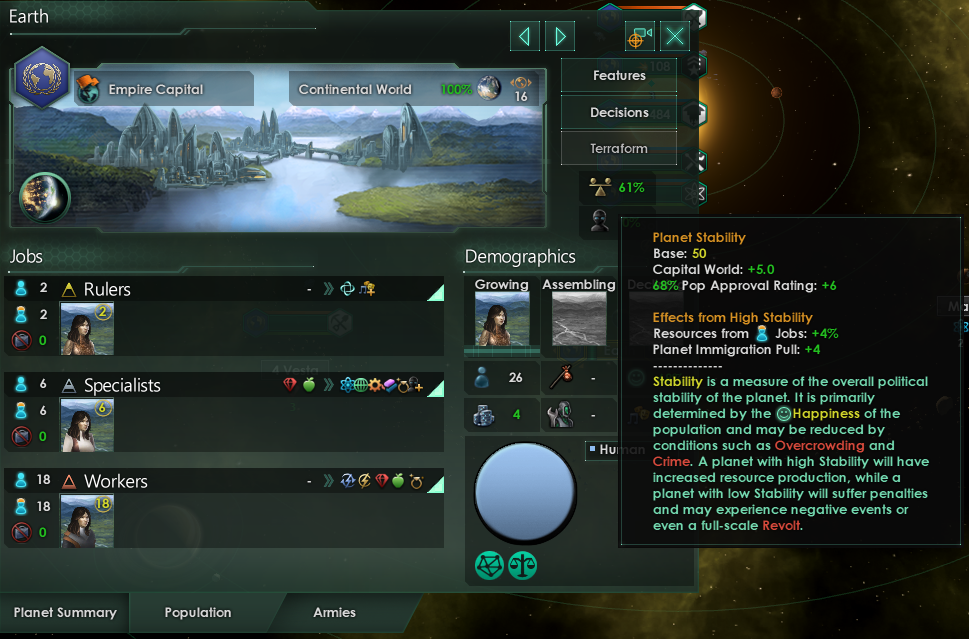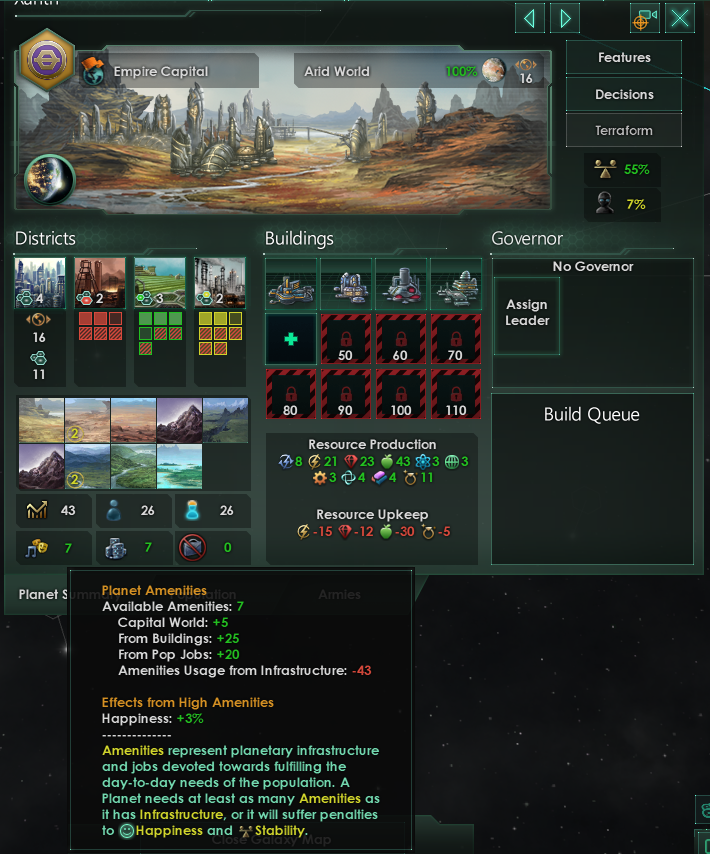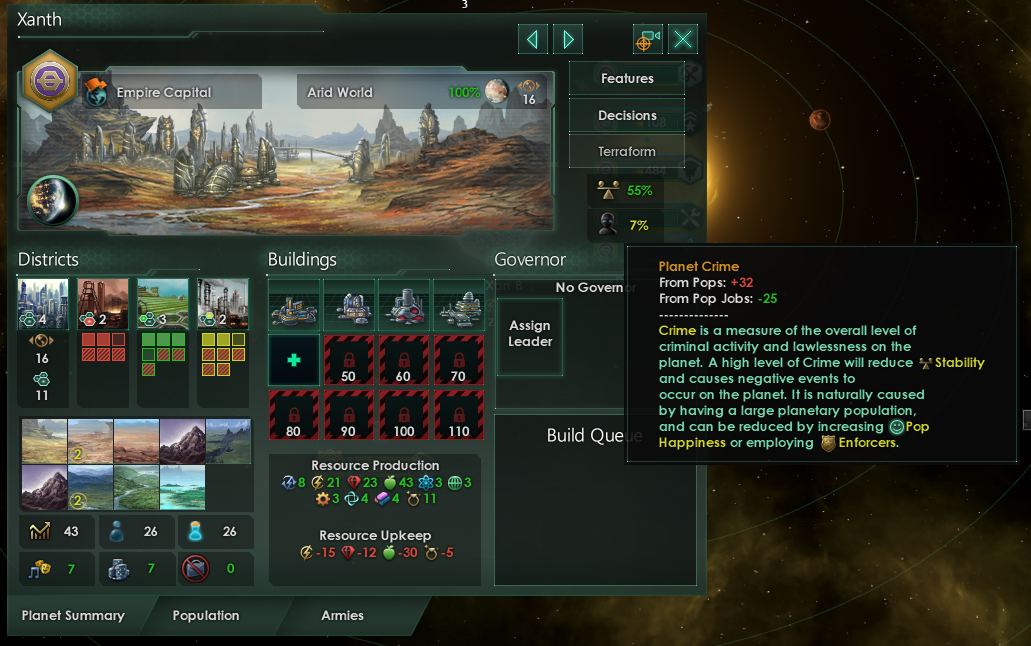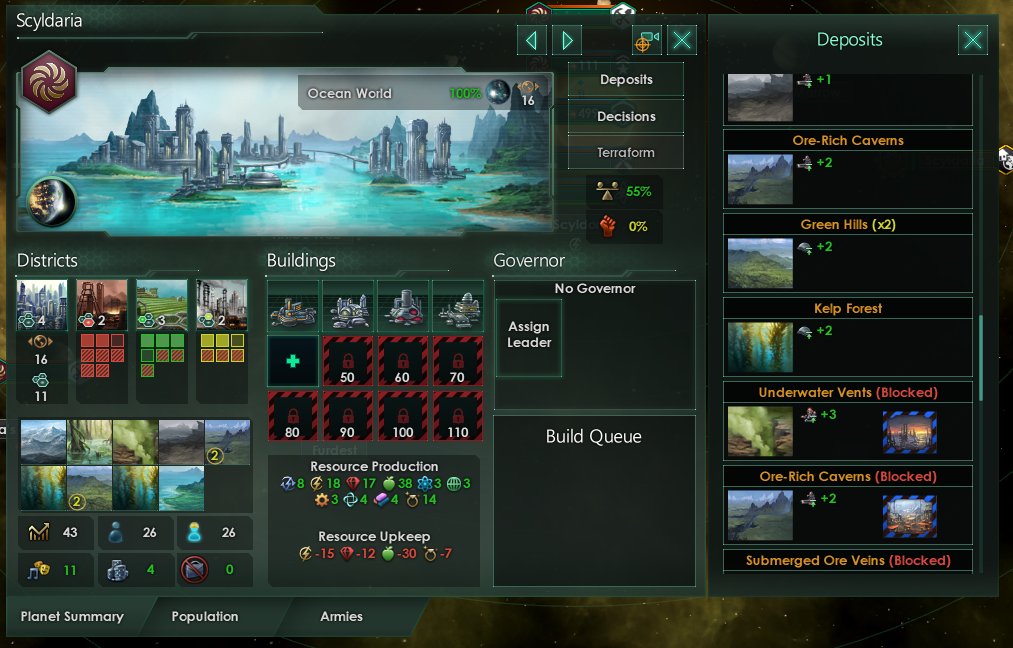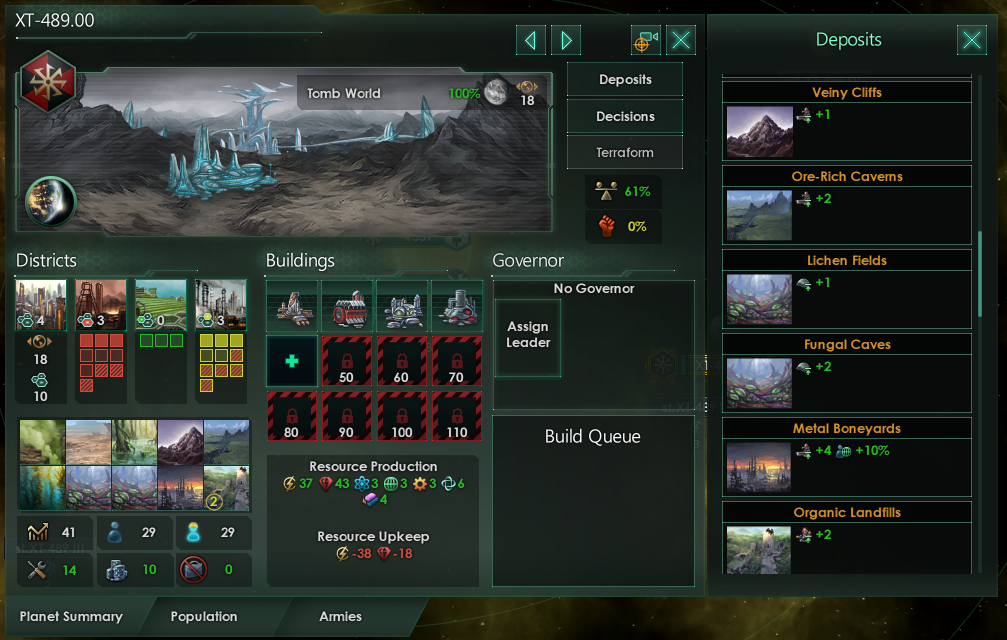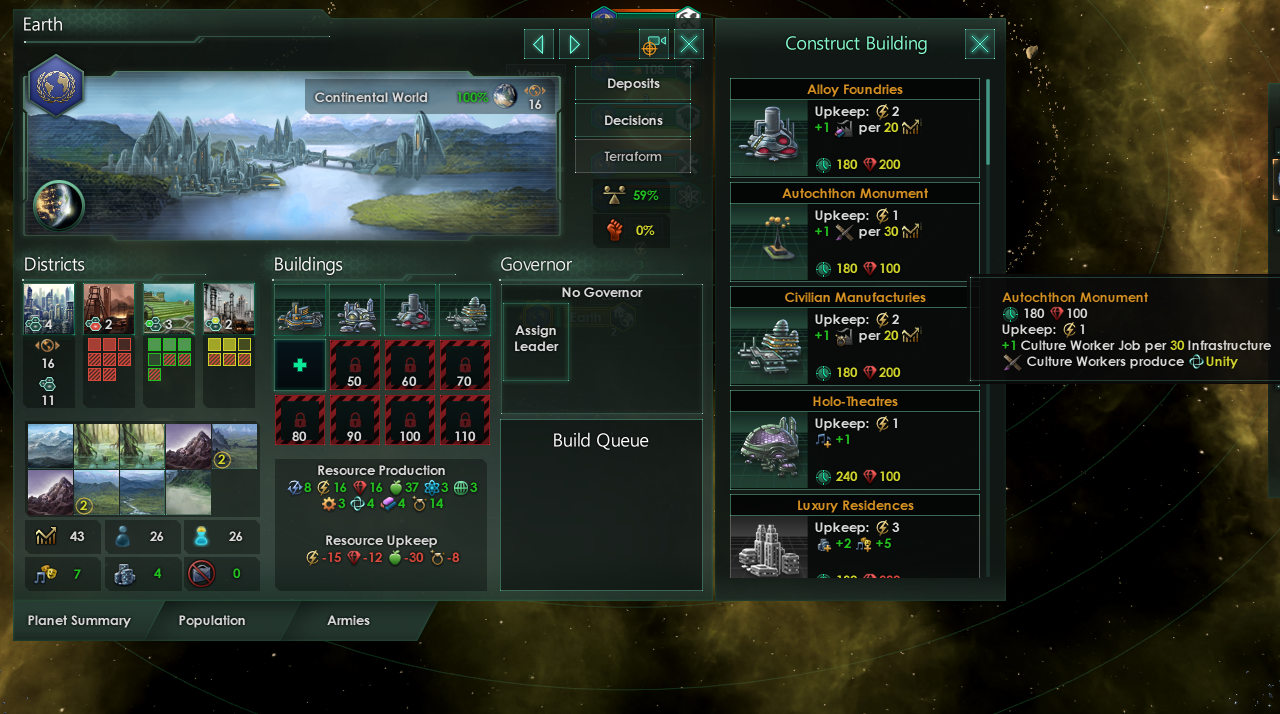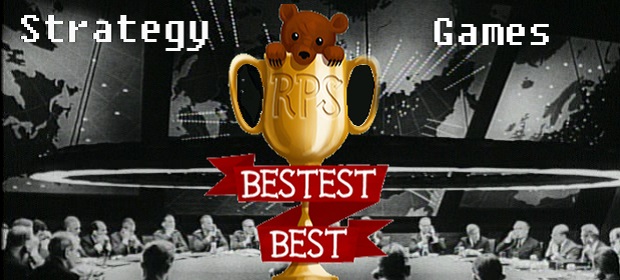

Sector Rework
Sectors have always been a bit of a controversial feature. Even if you disregard arguments about the general level of competence of the sector AI, the fact that sectors effectively force the player to cede control over all but a few of their planets has never gone down well with certain players. In truth, the decision to force players to give planets to sectors was very much a result of the old tile system - because of the sheer amount of micromanagement that was involved in managing a large number of planets, it was decided that automation was necessary, and also to make that automation mandatory (barring mods) to effectively force players to not make themselves miserable by micromanaging the tiles of a hundred different worlds. With the planetary rework in the Le Guin update, we no longer feel that this mandatory automation is needed any longer, and so we've decided to rework the sector system entirely.
Instead of being autonomous mini-economies, sectors are now administrative units in your empire, with their layout decided by galactic geography, with each sector corresponding to a cluster of stars in the galaxy. Sectors are automatically created when you colonize a planet in a previously uncolonized cluster, and your 'core sector' is simply the cluster in which your capital is located. All interfaces that are relevant to sectors and planets (such as the outliner) are now organized by collapsible sector entries, allowing for better overview and management of a large number of planets. As before, each sector can have a governor assigned to it, but sectors now automatically send all of their production to the empire stockpile instead of having their own fully realized economy. However, since we still want players to be able to offload some of the planetary management when controlling a large number of worlds, it is still possible to allocate resources to a Governor, who will use those resources to develop the planets under their control. This of course means that there is no longer any core sector limit, and anything that previously used to give a bonus to core sector planets has either been changed into a different bonus or removed altogether.
(Note: Image is highly WIP and has missing elements)
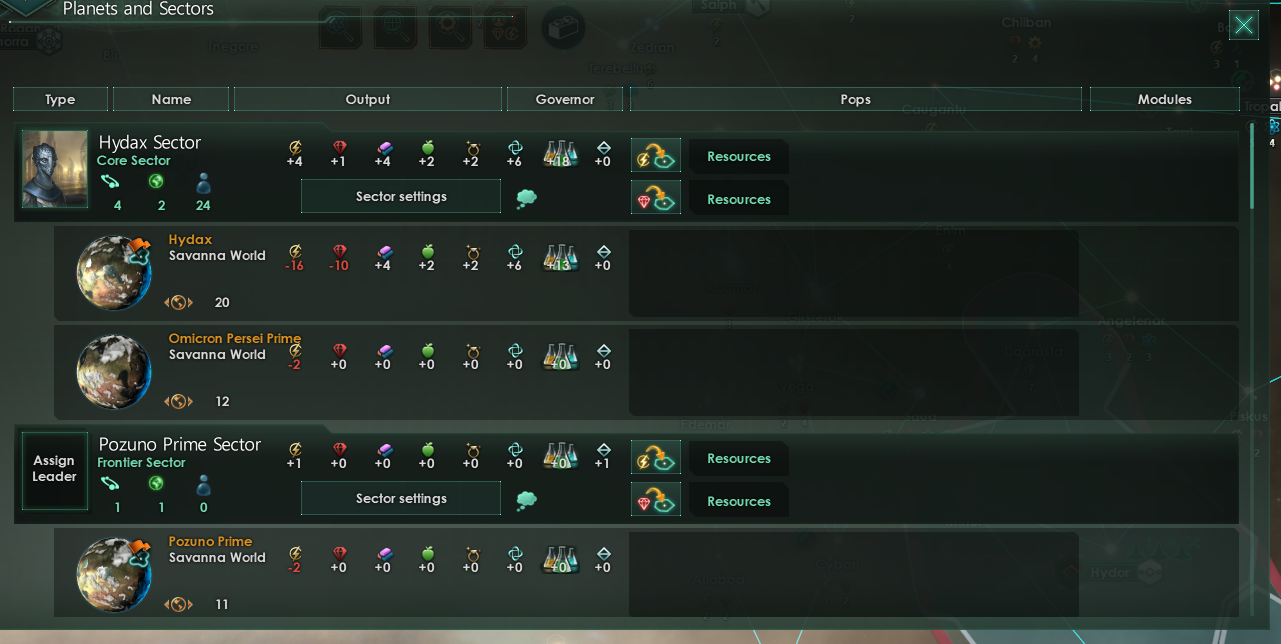
Faction Happiness Rework
Factions are also changing in Le Guin, though not to nearly the same degree as sectors. Most of the core mechanics of factions will remain the same, but Faction Happiness is being changed into something we call Faction Approval, measuring how much a Faction approves of your empire's policies. Where previously Factions would only give influence when above a 60% happiness threshold, Factions now always give some influence, with the amount scaling linearly to their Approval, so a 10% Approval faction will give only 1/10th of the influence that a 100% Approval faction gives you (the amount they give also still scales to their share of power in your empire). Faction Approval is also no longer directly applied to Pop Happiness, but rather will affect the happiness of Pops belonging to that faction at different thresholds, with small boosts to happiness at higher levels of approval and increasingly severe penalties to happiness at low levels of approval (effectively swapping the influence threshold for various happiness thresholds).
This should mean that even small boosts to faction approval now directly translates into influence gain, and that factions almost always give *some* benefit, even if that benefit may be outweighed by the unhappiness and unrest they can cause. We're also hoping to have time to review the faction issues, tying them more directly to policies to make them easier to understand. For example, instead of demanding that all species have their rights manually set to Full Citizenship, the Xenophile faction might demand a certain empire-wide policy setting that forces the equal application of species rights across all species.
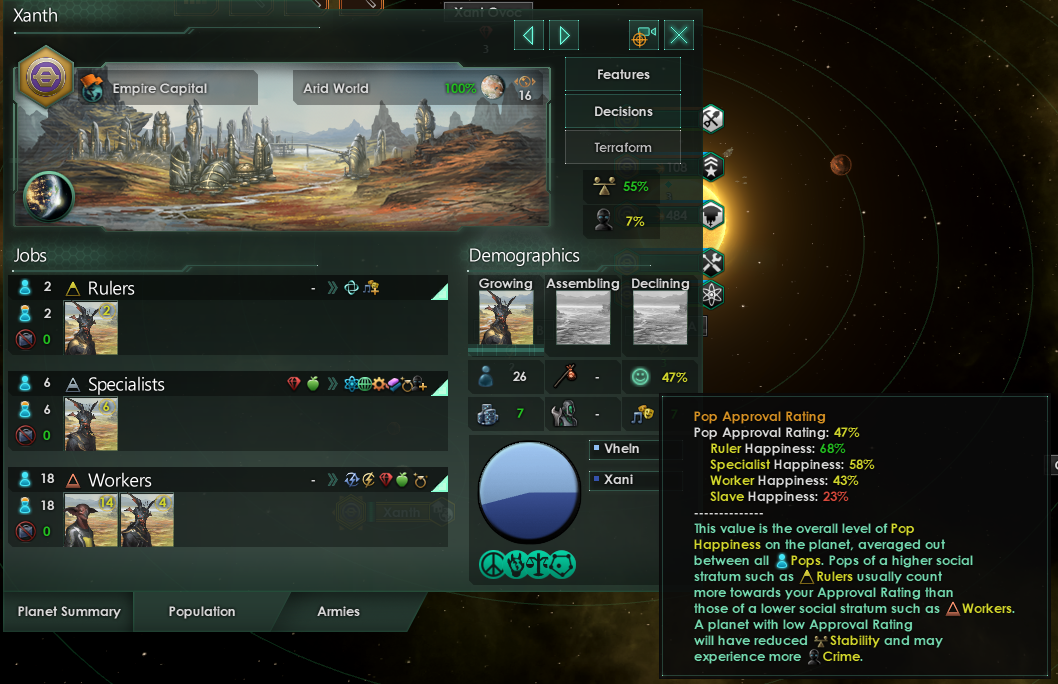
That's all for today! Next week we're continuing to talk about the Le Guin update, on the topic of Trade Value and Trade Routes.





